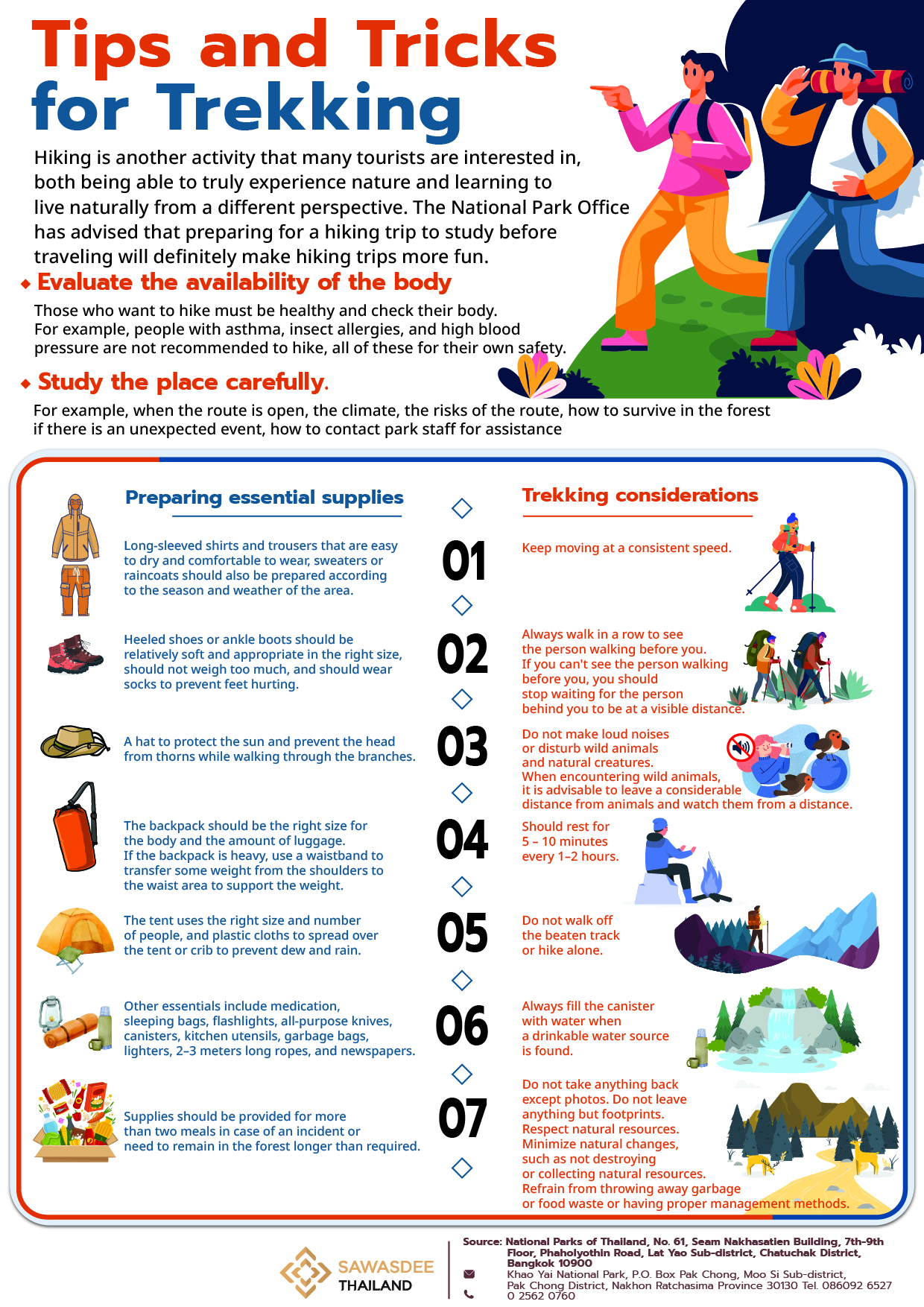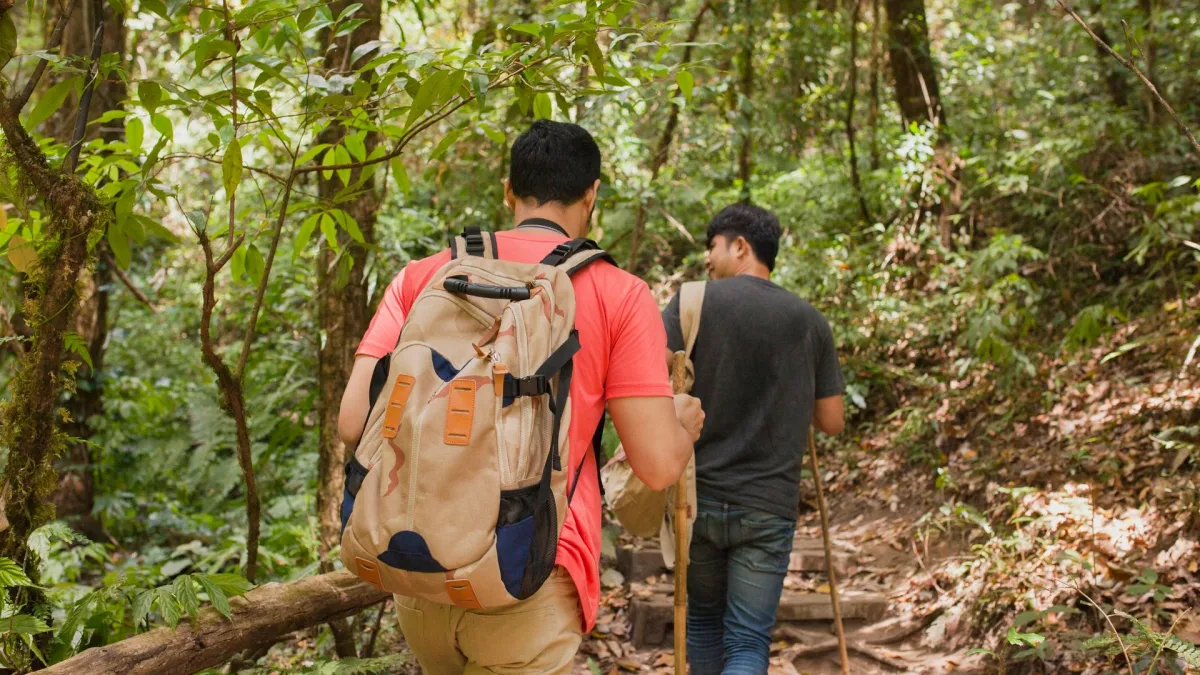Tips and tricks for trekking
Hiking is another activity that many tourists are interested in, because it is the best way to both truly experience nature and learn to live naturally from a different perspective. The National Park Office has advised that, when hikers are preparing for a trip, taking time to study before traveling will definitely make their hiking trip more fun.
Evaluate the capability of the body
Those who want to hike must be healthy, but even apparently healthy people ought to get a check-up. Also, people with asthma, insect allergies, and high blood pressure are advised not to hike; it is a matter of their own safety and consideration for their companions.
Study the place carefully
For example, it is important to know such things as when the route is open, the weather forecast, the risks of the route, how to survive in the forest if there is an unexpected event, and how to contact park staff for assistance.
Preparing essential supplies
- Long-sleeved shirts and trousers that are easy to dry and comfortable to wear, and sweaters or raincoats should also be prepared, depending on the season and weather of the area;
- Heeled shoes or ankle boots should be relatively soft and comfortable, in the right size, should not weigh too much, and you should wear socks to prevent sore feet;
- A hat to protect yourself from the sun and protect the head from thorns while walking through the branches;
- The backpack should be the right size for the body and the amount of luggage. If the backpack is heavy, use a waistband to transfer some weight from the shoulders to the waist area to support the weight;
- Tents should be the right size for the number of people, and plastic sheets can be spread over the tent to prevent dew and rain from soaking through;
- Other essentials include medication, sleeping bags, flashlights, all-purpose knives, canisters, kitchen utensils, garbage bags, lighters, 2-3-meter-long ropes, and newspapers for lighting fires and for padding;
- Supplies should be provided for more than two meals in case of an incident or you need to remain in the forest longer than expected.
Trekking considerations
- Keep moving at a consistent speed;
- Always walk in a row to see the person walking before you. If you can't see the person walking before you, you should stop and wait for the person behind you to be at a visible distance;
- Do not make loud noises or disturb wild animals and native creatures. When encountering wild animals, it is advisable to keep a considerable distance from them and watch them from a distance;
- Everyone should rest for 5-10 minutes every 1-2 hours;
- Do not walk off the beaten track or hike alone;
- Always fill the canisters with water when a drinkable water source is found;
- “Do not take anything back except photos. Do not leave anything but footprints.” Respect natural resources. Minimize natural changes, such as not destroying or collecting natural resources. Do Not throw away garbage or food waste; wild animals should not get used to eating our food. It is easy to follow proper management methods – “If you packed it in full, you can pack it out empty.”
Source: National Parks of Thailand, No. 61, Seam Nakhasatien Building, 7th-9th Floor, Phaholyothin Road, Lat Yao Subdistrict, Chatuchak District, Bangkok 10900.
Tel. +66 2562 0760
Khao Yai National Park, P.O. Box Pak Chong, Moo Si Subdistrict, Pak Chong District, Nakhon Ratchasima Province 30130.
Tel. +66 86092 6527
For more information 1
For more information 2


